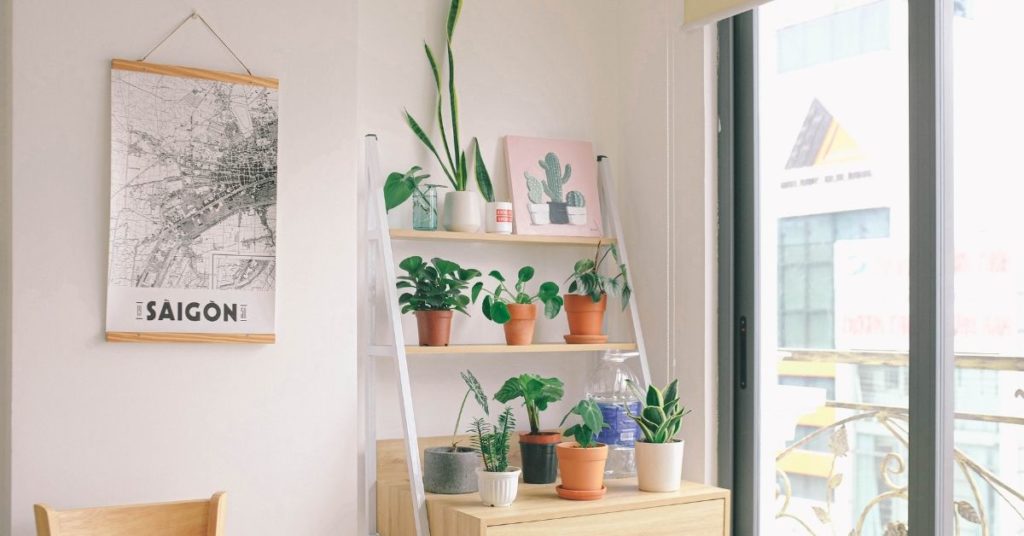
According to Architectural Digest, wellness real estate is a $134 billion-and-growing market, with homeowners and real estate developers installing everything from infrared saunas to circadian light technology in an attempt to out-do the buildings and homes next door. And after 2020, forever the year of WFH life and stay-at-home orders, it’s no surprise.
2020 ushered in the era of the wellness boom, with cozy streetwear destabilizing high-fashion and the home workout revolution replacing gym memberships across the United States.
No longer limited to the health industry alone, the wellness movement has officially crept into every aspect of our lives—from work and fitness to fashion and our homes.
And regardless of whether your aesthetic mirrors the mid-century modern trend of the 1950s or the Art Deco movement, these growing wellness-first design trends span aesthetics and taste, to create curated interiors that put your health and well-being at the forefront of your living space.
From chrom0therapy to ergonomic comfort, read on to discover the latest breakthroughs in the growing world of wellness design.
1. Deepen Your Sleep With Circadian Lighting
If you have difficulty sleeping or seasonal affective disorder, consider switching to circadian lighting to help improve sleep, mood, and overall well-being.
Circadian lighting is a 24-hour light-dark pattern that mimics the rise and fall of the sun, using nuanced whites throughout the day. During the daytime, circadian lights emit bluish whites to disrupt our body’s natural melatonin production (a hormone made by the pineal gland in the brain to encourage sleep) and create a sense of wakefulness instead. As the day goes on, circadian lighting switches to an amber lighting that does not disrupt melatonin production and therefore allows the hormone to produce freely without impediment.
In 2017, a study by Rensselaer Polytechnic Institute and the United States General Services Administration found that office workers exposed to bright and bluish light slept better and had lower levels of depression than those who did not.
2. Bring Nature Within With Biophilic Design
A growing interior design trend that emphasizes the human allure to the natural, biophilic design is all about tiny tweaks to your space that put wellness at the helm of your home’s design.
These micro-restorative enhancements have been linked to increased office productivity, overall well-being, shortened postoperative recovery time, and increased rates of learning. Incorporate biophilic design into your space with natural elements such as plants, running water, biomorphic patterns, and natural materials like teak, cork, and wood.
3. Infuse Chromotherapy Into Your Color Palette
Maximalists and color-lovers, rejoice. Despite the rise of whites and neutrals in the 2010s, the 2020s are all about color. Lots of it.
If you’re unsure what colors to use in your home or how to incorporate color into your space, chromotherapy is the solution for you. Chromotherapy is the science of using light and color to connect to frequencies within the body. It’s why our bodies feel naturally energized when we encounter red, and peaceful when we witness lavenders and violets. For rooms of rest, consider emphasizing cool colors like blue, green and purple, saving warmer colors for collective community spaces like the kitchen and living room.
For those renting spaces, consider utilizing color-changing light bulbs to change the color of the room without a drip of paint.
4. Savory Smells With Sensory Design
Beyond the visual, any well-designed space must also take into account the other senses, especially smell. Smells can take us back to childhood memories, or make us wrinkle our nose in disgust. According to the Cleveland Clinic integrative medicine specialist, Yufang Lin, MD, aromatherapy works by activating the central nervous system and triggering an emotional response, leading to a rapid reduction of anxiety and stress, depending on the specific scent.
While lavender is most commonly associated with reducing stress and pain, peppermint oil is known for lifting spirits and supporting digestion. Whether you use candles, essential oils, incense, or wall fresheners, try to place them strategically across rooms—matching the scents with the visual mood of the room.
Use the code “peacefuldumpling” to get 10% off your purchase of Rosa Whole-Fruit Rosehip oil here.
5. Focus on Ergonomic Comfort
With WFH on the rise, incorporating ergonomic design as a wellness trend isn’t just a want, it’s a need. Ergonomic design is all about keeping our body safe from injury, whether that be back, wrist, rear, or shoulder pain. By utilizing desks, chairs, couches, and stools that are made to improve posture and protect our body parts, we can keep our bodies healthy to do the things we actually want to do outside of sitting slumped in front of our desks for 8+ hours per day.
An important aspect of ergonomic design to keep in mind is that no two ergonomic spaces are made the same. Ergonomics is all about customization, knowing that an ergonomic space for a seven-foot-tall basketball player looks far different from that of a petite gymnast. Whatever you do, make sure your desks and chairs are at a height that is suitable for your needs, to keep your body positioned correctly.
***
Whether through circadian lighting or essential oils, elevate your interior today to create a space that promotes wellness in body, mind, and spirit.
Get more like this—Sign up for our daily inspirational newsletter for exclusive content!
__
Photo: Huy Phan via Pexels




